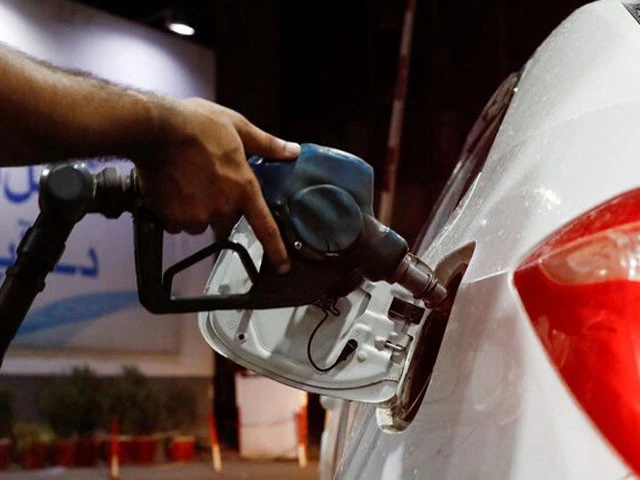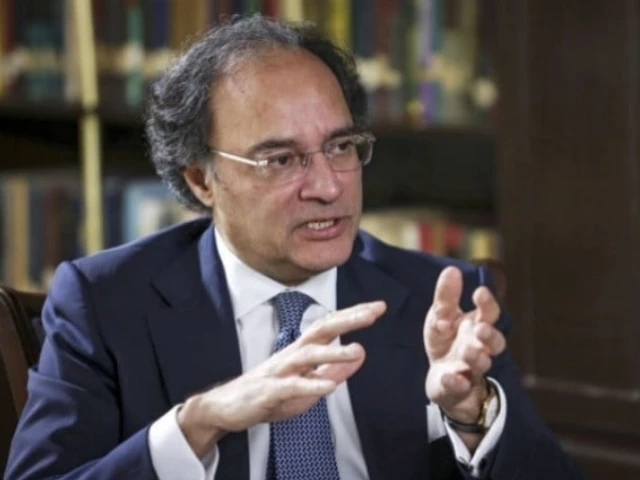Business
Taco Bell tries to woo younger customers with Live Más Café’s flashy beverages

IRVINE, Calif. — Taco Bell is going all in on beverages, starting with its Live Más Café concept.
The Yum Brands chain unveiled the drink-focused store format last December, with the first location in Chula Vista, California. Ten months later came the second location, near the University of California, Irvine campus. By the end of the year, Taco Bell is projecting that it will have 30 Live Más Cafés in its portfolio, across Southern California, Dallas and Houston.
Unlike McDonald’s now-defunct CosMc’s spinoff, which had its own standalone locations, the Live Más Café lives inside existing Taco Bell restaurants. Customers order at kiosks and can watch the “bellristas” assemble their drinks from behind the designated counter, which takes prime real estate in the store. The drink menu includes a range of beverage options, from blended coffees to lemonade-based drinks.
The beverage-focused concept is supposed to help the Mexican-inspired chain reach its goal of generating a $5 billion drink business by 2030. Taco Bell first disclosed that target in March at an investor day, where the chain shared more about its plans to keep growing as it fuels Yum’s operating profit growth.
So far this year, Taco Bell has sold more than 600 million beverages, up 16% from the year-ago period, according to the company. More than 60% of the chain’s orders this year have included a drink, Taco Bell said.
“I think drinks are big right now because I think people are really craving unique, interesting flavors in their beverages, and we hear that all the time from our consumers,” said Liz Matthews, global chief food innovation officer for Taco Bell.
Center stage
Taco Bell’s Live Más Café.
Courtesy: Taco Bell
Stepping inside the Irvine location, the Live Más Café beverage station is the clear star.
Most of the self-order kiosks are positioned in front of the station’s long counter. Customers have a free view of the “bellristas” making their specialty drinks, unlike the restaurant’s other employees who assemble Crunchwrap Supremes and Chalupas hidden from sight.
Digital menu boards across the restaurant highlight the beverage offerings. The drink menu spans four distinct categories: churro chillers, specialty coffees, refrescas and “bellrista favorites.”
The churro chillers are creamy and cold milkshakes topped with churro chunks. The specialty coffees come either hot, iced or blended as a “chiller.” Brightly colored refrescas use either lemonade, green tea or Rockstar energy drinks as the base for their fruity flavors, such as strawberry passionfruit or mango peach. And the “bellrista favorites” include seasonal options, such as the autumnal caramel apple empanada churro chiller, which incorporates blended chunks of Taco Bell’s apple empanada.
When crafting the menu, Matthews and her team tried to stick to the chain’s Mexican-inspired roots, but she said Taco Bell will always have a “playful spirit.”
And while the Live Más Café offers plenty of options with a variety of flavors, Taco Bell kept the options to customize minimal.
“What we found when we talked to consumers, they actually really want us to curate their drink for them,” Matthews said.
To date, the Irvine location’s top-selling drinks are the Mexican Chocolate Churro Chiller, the Dirty Mountain Dew Baja Blast Dream Soda and the Mango Peach Agua Refresca. Six of the top 10 bestselling drinks at the location are chillers. That’s a reversal from the initial test location in Chula Vista, which has seen similar demand for every drink category, according to Matthews.
Since its opening day in September, the Irvine location has been selling more than 900 drinks per day, according to Taco Bell. More than a third of orders include an item from the Live Más Café menu.
Meanwhile, the Chula Vista location — which exceeded its initial sales forecast by four times — is selling more than 750 beverages a day nearly a year since its opening, the company said. A quarter of all transactions include a Live Más Café beverage, according to Taco Bell.
“Given what we’re seeing right now from the business results, the payback looks really attractive and in line with what our franchisees would expect for something big, but we’ve got a lot more to learn,” said Taylor Montgomery, global chief brand officer of Taco Bell.
‘Little treat’
This year, the hottest trend in fast food hasn’t been a chicken sandwich or plant-based burgers. Instead, beverages of all consistencies, colors and nutritional values have taken the spotlight.
For example, Shake Shack is selling lemonade with mini raspberry popping boba, inspired by the success of bubble tea. Panera Bread is testing frescas and energy refreshers in select bakery-cafés. Chick-fil-A is planning to open Daybright — a beverage-focused restaurant with specialty coffees, smoothies and cold-pressed juices — in Hiram, Georgia, later this year. And although McDonald’s this summer wound down its spin-off called CosMc’s that focused on drinks and snacks, it also tested new coffee drinks, refreshers and flavored sodas at more than 500 U.S. restaurants.
The number of beverages sold by the top 500 chains has climbed more than 9% in the last year, according to Technomic. The swell of beverage innovation follows the speedy expansion of a number of a specialty drink chains, from upstart 7 Brew Coffee to dirty-soda inventor Swig.
“[Quick-service chains] have seen that there’s a big opportunity with an entire generation and how they’re interested in that ‘little treat’ culture,” said Claire Conaghan, “trendologist” at Datassential, which tracks menu trends. “There’s options to kind of go beyond their focus area of core meal and really lean into that snacking moment.”
Generation Z and millennials are driving the trend, according to Varchasvi Singh, a foodservice analyst for Mintel. Younger generations enjoy customizing their food and beverage orders.
“Among younger consumers, in particular, we see that fast-food dining is just as much about experimentation and novelty as it is about indulgence,” Singh said. “They’re a lot more open to trying premium menu items and personalizing their orders, whereas older generations, who have associated fast food with extreme affordability for a long time, are a little bit more critical of how expensive it has become for them.”
For Taco Bell, turning to beverages and creating the Live Más Café is part of its broader plan to appeal to younger consumers, whose spending power is projected to increase rapidly in just a few years.
“Over the past five years, we’ve really, really been transitioning and thinking about the brand and how to position it for Gen Z, and so Café was really born from that,” Montgomery said. “I think it’s something like 60% of Gen Z consumers come to a restaurant or [quick-service restaurant] for an afternoon treat.”
Rather than creating a standalone Live Más Café, Taco Bell chose to put the sub-brand inside existing restaurants in part because of “humility,” according to Montgomery.
“Today, we’re not known to be a beverage destination — yet,” he told CNBC.
Live Más Café can also help Taco Bell more broadly.
“It also acts a little bit as a test market where they can get some more real-time data. Which combos do people do the most?” Conaghan said. “Which customizations matter the most? Do we need every type of alternative milk or maybe just these one or two? Do we need all 15 flavors of whatever energy refresher?”
That’s already started happening. Taco Bell’s agua frescas, which began as a Live Más Café menu line, have since been launched nationwide.
“They’re one of our top-selling items, and we didn’t wait to scale the Café,” Montgomery said. “We pushed those in all the restaurants, and we’ve seen success there.”
Plus, the coffee options on the café’s menu are part of Taco Bell’s plan to make a bigger push into breakfast. The chain started serving the morning meal more than a decade ago but told franchisees last year that they could opt out serving breakfast; for some fast-food operators, opening early isn’t profitable, plus there’s the added headache of finding staff willing to work the morning shift.
Taco Bell has already had some success with another sub-brand. Its Cantina format, typically found in cities, features a custom menu, alcoholic beverages and seating meant to encourage customers to linger. Since opening the first location in Chicago a decade ago, Taco Bell Cantina has grown to dozens of restaurants.
Broadly, even as inflation-weary consumers pull back their spending, Taco Bell’s focus on new menu items has lifted its sales; earlier this year, the company announced plans to double innovation in 2025. Taco Bell’s prices have climbed 75.5% since 2019, according to Technomic’s Ignite Menu. Still, customers keep coming back.
In recent years, Taco Bell has been the gem of Yum’s portfolio, typically outperforming both Wall Street’s expectations and its sister chains, KFC and Pizza Hut. Executives have named the chain as one of the company’s primary growth engines. In the second quarter, while many fast-food rivals reported shrinking sales, Taco Bell reported same-store sales growth of 4%.
“From a portfolio standpoint, we represent a pretty significant amount of Yum’s operating profit, but we learn a lot from other brands, too,” Montgomery said.
Yum is expected to report its third-quarter earnings before the bell on Nov 4.
Watch the video to learn more about why Taco Bell is betting on drinks.
Business
‘Can a dead economy grow at 8.2%?’: FM Sitharaman rebuts Trump remark in Lok Sabha; cites IMF ratings upgrade – The Times of India

Finance Minister Nirmala Sitharaman on Monday cited India’s strong growth and sovereign rating upgrades to counter claims that the country was a “dead economy”, telling the Lok Sabha that such upgrades would not have been possible if the economy were weak, PTI reported.Responding to Opposition members who sought the government’s reaction to US President Donald Trump’s description of India as a “dead economy”, Sitharaman said India remains the fastest-growing major economy, recording 8.2% growth in the September quarter.“The economy in the last 10 years has transitioned from external vulnerability to external resilience,” the minister said while replying to the Supplementary Demands for Grants for 2025-26 in the House.“Every institution is raising our growth outlook for this year and the forthcoming year. There are clear expressions (from the IMF) recognising India’s growth and no dead economy gets a credit rating upgrade by DBRS, S&P and R&I,” Sitharaman said.Trump had made the “dead economy” remark in July while expressing disappointment with India’s decision to continue buying oil from Russia. Sitharaman said data and assessments by global institutions contradicted that characterisation.“The economy today has moved from fragility to fortitude,” she said.“So somebody said something somewhere, however important that somebody is, we should not depend on that but rely on data available within the country and also data coming from elsewhere. Rely on data,” she told Opposition members.“Can a dead economy grow at 8.2%? Can a dead economy get credit rating upgrades?” Sitharaman asked.The Reserve Bank of India last week raised its GDP growth projection for FY26 to 7.3% from 6.8% earlier. India grew 8.2% in the September quarter and 7.8% in the June quarter.On concerns raised over the International Monetary Fund’s assessment of India’s national accounts — including Gross Domestic Product (GDP) and Gross Value Added (GVA) — Sitharaman said India’s overall grading remains unchanged at the median rating of ‘B’.She said the IMF had flagged the outdated base year for national accounts and suggested rebasing. “So to say that there has been a downgrade by IMF is misleading the House. For this year, IMF gave B for overall statistics,” she said, adding that India has remained the fastest-growing major economy for the fourth consecutive year despite the pandemic.Sitharaman also addressed concerns over public debt, saying India’s debt-to-GDP ratio rose to 61.4% after Covid but was brought down to 57.1% by 2023-24 due to policy measures taken by the central government.“By this year-end, I expect it to come down to 56.1%,” the finance minister said.
Business
Govt cuts diesel price by Rs14 per litre, keeps petrol unchanged | The Express Tribune

The new prices will take effect from midnight and will remain applicable for next 15 days, according to notification
A worker holds a fuel nozzle to fills fuel in a car at petrol station in Karachi on September 16, 2023. Photo: REUTERS/ File
The federal government has reduced the price of high-speed diesel by Rs14 per litre for the next 15 days, while keeping petrol prices unchanged, according to a notification issued by the Petroleum Division late Monday night.
Under the revised prices, the new rate of high-speed diesel has been fixed at Rs265.65 per litre. Petrol will continue to be sold at Rs263.45 per litre. The Petroleum Division said the changes will take effect from midnight and remain applicable for the next fortnight.
The notification marks a significant reduction in diesel prices, which is expected to provide some relief to the transport and agriculture sectors. However, motorists using petrol will see no change in fuel costs during the period.
On November 30, the government had also reduced fuel prices by up to Rs4.79 per litre for the fortnight ending December 15. According to a notification issued by the Petroleum Division, petrol was reduced by Rs2 to Rs263.45 per litre, while high-speed diesel saw a cut of Rs4.79 to Rs279.65 per litre.
High-speed diesel is extensively used in the transport and agriculture sectors, meaning reductions have a wide economic impact. Petrol, primarily used in motorbikes and cars, is most consumed in Punjab due to restrictions on the use of indigenous gas at CNG stations.
Fuel prices in Pakistan are reviewed every 15 days, in line with global oil market trends and domestic fiscal considerations.
Business
Aurangzeb highlights Pakistan’s strategic shift to restore economic confidence – SUCH TV

Finance Minister Muhammad Aurangzeb underscored Pakistan’s strategic shift from seeking aid-based support towards trade- and investment-led engagement to ensure long-term economic sustainability and mutually beneficial partnerships, particularly with the Gulf Cooperation Council (GCC) countries.
In an interview with CNN Business Arabia, Aurangzeb highlighted the vision of Prime Minister Shehbaz Sharif, which reflected Pakistan’s renewed economic confidence and reform momentum.
He said that Pakistan has followed a comprehensive macroeconomic stabilisation program for the past 18 months, which has delivered tangible and measurable results, while inflation has declined to single-digit levels from an unprecedented 38%.
On the fiscal front, Pakistan has achieved primary surpluses, while the current account deficit remains well within targeted limits. According to the finance czar, the exchange rate has also stabilised, and foreign exchange reserves have improved to approximately 2.5 months of import cover, reflecting strengthening external buffers.
He maintained that the country has two major external validations, which indicate Pakistan’s improving economic outlook.
Firstly, he said, all three international credit rating agencies have aligned their assessments this year by upgrading Pakistan’s ratings and outlook. On the other hand, the country has completed the second review under the IMF Extended Fund Facility, with the IMF Executive Board granting its approval earlier this week.
He stated that such developments demonstrate growing international confidence in Pakistan’s economic management and reform trajectory.
The finance minister further emphasised that macroeconomic stabilisation has been achieved through a coordinated approach combining disciplined monetary and fiscal policies with an ambitious structural reform agenda.
“Reforms are being implemented across key areas, including taxation, energy, state-owned enterprises, public financial management, and privatisation, aimed at consolidating stability and laying the foundation for sustainable growth,” Aurangzeb said.
The finance minister also highlighted the significant progress in Pakistan’s improvement of the tax-to-GDP ratio.
“During the last fiscal year, it increased to 10.3 per cent, with a clear path towards 11 per cent,” the finance minister said.
He further explained the government’s objective to reach a level of tax collection that ensures fiscal sustainability over the medium to long term.
“This is being pursued through widening the tax base by bringing previously undertaxed but economically significant sectors such as real estate, agriculture, and wholesale and retail trade into the formal net, alongside deepening compliance by reducing leakages through production monitoring systems and AI-enabled technologies. Simultaneously, the tax administration is being transformed through reforms in people, processes, and technology,” he said.
The minister further highlighted efforts to improve governance in [power] distribution companies, involve private sector expertise, advance privatisation, and reduce circular debt, which has long constrained the power sector.
“Rationalising the tariff regime is essential to making energy more competitive for industry, thereby enabling industrial revival and economic growth,” he stressed.
Senator Aurangzeb acknowledged the longstanding support of GCC countries, including Saudi Arabia, the United Arab Emirates, and Qatar, for their critical role in critical role supporting Pakistan through financing, funding, and cooperation at international financial institutions such as the International Monetary Fund.
“This relationship is now evolving towards a new phase centred on trade expansion and investment flows. Remittances continue to play a vital role in supporting the current account, with inflows reaching approximately $38 billion last year and projected to rise to $41-42 billion this year, over half of which originates from GCC countries,” he added.
He further said, “Pakistan is actively engaging with GCC partners to attract investment in priority sectors including energy, oil and gas, minerals and mining, artificial intelligence, digital infrastructure, pharmaceuticals, and agriculture.”
Expressing optimism regarding progress on a Free Trade Agreement (FTA) with the GCC, he termed the discussions at an “advanced stage”.
Senator Aurangzeb reiterated the government’s strategic direction in shifting the collective focus on trade rather than relying on aid.
“Pakistan’s future lies in fostering trade and investment partnerships rather than reliance on aid,” said the finance minister.
He also emphasised the role of foreign direct investment in supporting the higher GDP growth, generating employment opportunities, and delivering shared economic benefits for Pakistan and its partners.
“The government is fully mobilised to translate this vision into reality.” He concluded.
-

 Politics1 week ago
Politics1 week agoThailand launches air strikes against Cambodian military: army
-

 Fashion1 week ago
Fashion1 week agoGermany’s LuxExperience appoints Francis Belin as new CEO of Mytheresa
-

 Politics1 week ago
Politics1 week agoZelenskiy says Ukraine’s peace talks with US constructive but not easy
-

 Politics5 days ago
Politics5 days agoTrump launches gold card programme for expedited visas with a $1m price tag
-

 Politics1 week ago
Politics1 week ago17 found dead in migrant vessel off Crete: coastguard
-

 Tech6 days ago
Tech6 days agoJennifer Lewis ScD ’91: “Can we make tissues that are made from you, for you?”
-

 Business5 days ago
Business5 days agoRivian turns to AI, autonomy to woo investors as EV sales stall
-

 Entertainment1 week ago
Entertainment1 week agoToo big to fail? IndiGo crisis exposes risks in Indian aviation











